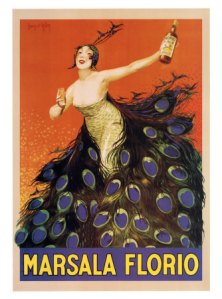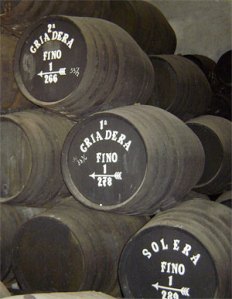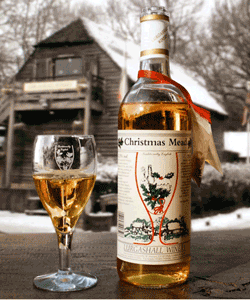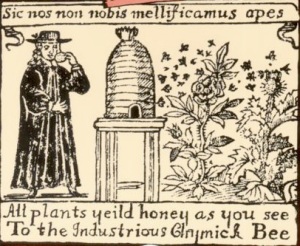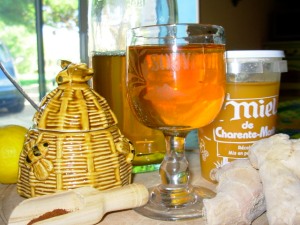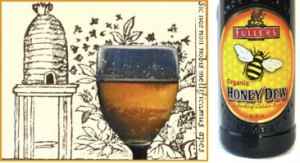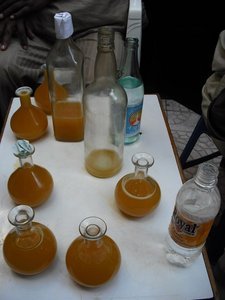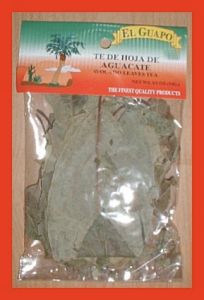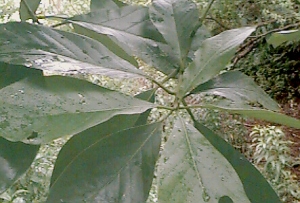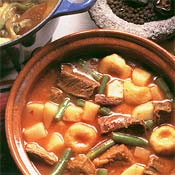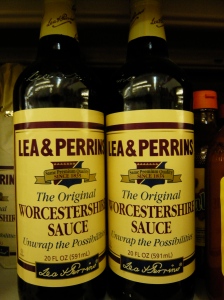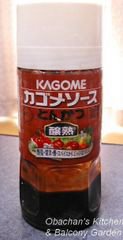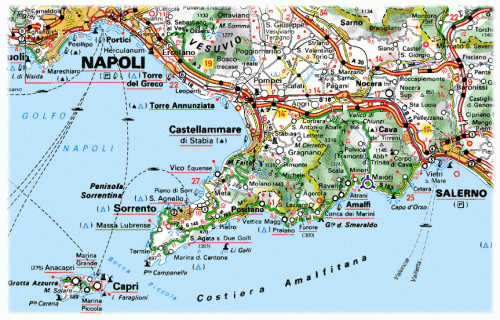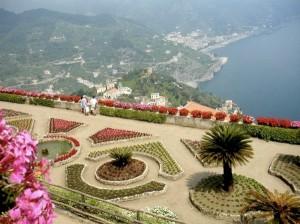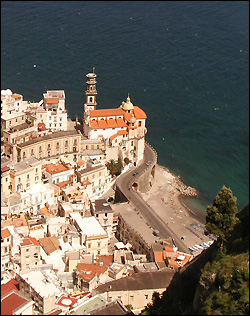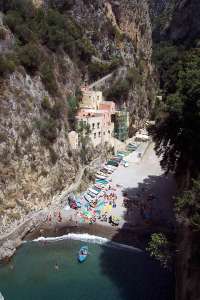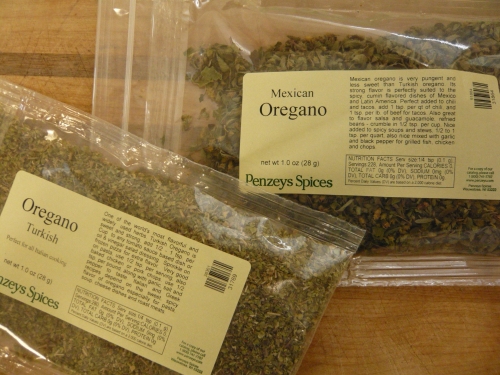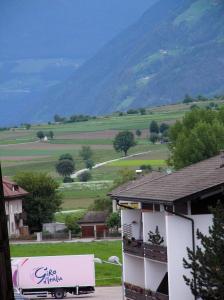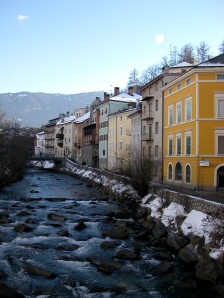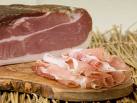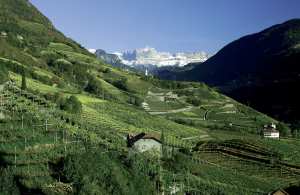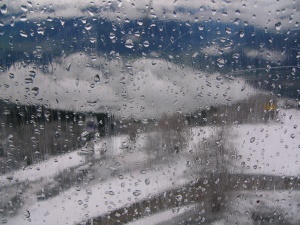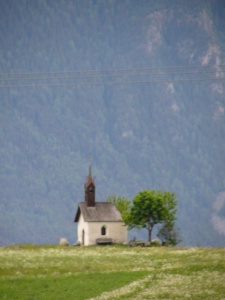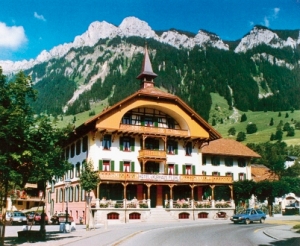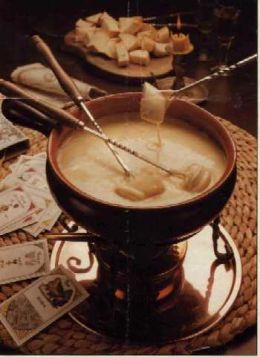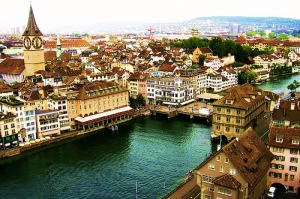
La Mar (photo from SF Gate)
In preparing a recent post on raw fish, I developed a craving for cerviche, and really who could blame me? Living in San Francisco, there was one restaurant on my radar that I knew could offer me an authentic, or at least close proximally, of the Peruvian cerviche I desired: that restaurant is La Mar Cebicheria Peruana, the first US foray for Chef Gaston Acurio. Immediately after I pressed the “publish” button for that post, I booked my reservations. I had the added privilege of having Daily Spud, a potato aficionado, accompany me on my exploration, and a more perfect lunch is hard to imagine.
I knew that Peruvian cuisine had amazingly range, but its diversity is hard to comprehend. The challenge is determining how to approach Peru’s food – by the diverse cultures that made their mark on its culture, with their food preparation and choices assimilated into the cuisine? Or, by the incredible food stock that exists in Peru and has incorporated into its recipes, such as corn, tomatoes, potatoes, quinoa? If ever a place was at the cross roads of diversity, it is Peru.
To appreciate the cuisine, some knowledge of Peru’s culture, history and geography is required.
Geography
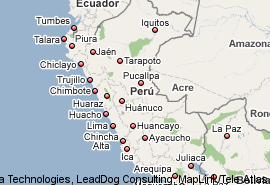
map of Peru (courtesy of Google)
Peru is physically isolated from its neighbors (Ecuador, Columbia, Brazil and Bolivia) by natural barriers such as the Andes and the Amazon river which discouraged early travel; i.e. walking. Its western edge is the Pacific Ocean which runs practically the entire length of the country. These physical limitations allowed tribes and cultures to thrive relatively undisturbed for a significant time. The landscape of Peru runs the gamut from the snowcapped mountains of the Andes, to the jungles of the Amazon basin, to the coastal plains.
History and Culture
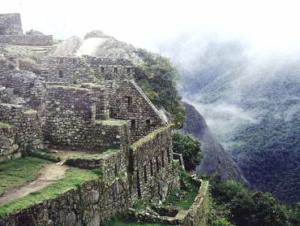
Machu Picchu (photo from STI-Travel.com)
Evidence of pre-Columbian civilizations (including the Incas) that thrived prior to the arrival of the Spaniards still exist. Peru’s history dates back as far as 11,000 BC with the Norte Chico civilization, one of the oldest in the world, and of course the Incas. When the Spanish conquered in the 16th century, they established the Viceroyalty, consolidating most of the South American colonies, and Peru finally gained its independence in 1821. Two groups have the majority of the population: approximately 45% of the people are Amerindian (indigenous Peruvians) At the time the Spanish arrived, more than 2,000 groups or tribes existed, today few distinct groups remain, most were assimilated into a single order, and many perished due to infectious disease. 37% of the population is Mesitzo, which refers to people of mixed European and Amerindian ancestry.

Andes (photo from imagesofanthropology.com)
The Incas were ingenious land stewards, building elaborate terraces and irrigation to cultivate food, primarily the potato, and quinoa which the Incas revered and called “mother again”. They also influenced the Peruvian taste with the addition of aji (hot peppers) and herbs such as hucatay.
The Spanish or Moorish influence included the meat that they brought: goats, chickens, cows, and sheep. Dairy products were added to the aij sauces. Rice, wheat and barley were thrown into the repertoire as were olives, oils, and vinegars. Wine making, pickling and frying techniques were introduced. As most of the conquistadores were from the Andalusia and Extremadura regions of Spain, not surprisingly 700 years of Moorish occupation offered some influence. Specifically from this region, they brought cumin, coriander, cinnamon, and cloves.
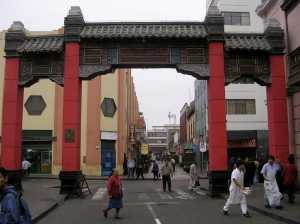
Chinatown in Lima (photo from journalperu.com)
About 4% of the population is Chinese Peruvian, having first immigrated in the 19th century to work as contract labor or coolies on the sugar plantations, and mines where unfortunately they became virtual slaves. Upon completion of their contracts, they tried their hand at small businesses including chifas (Chinese-Peruvian restaurants, the word comes from Mandarin for “eat-meal”), primarily in Lima. They introduced soy sauce, and vegetables from snow peas to ginger to the Peruvian diet. The initial distrust of the foreigners that cooked “anything that moved” gave way to such an acceptance, that 50 years after the first immigrant arrived, all the wealthy Lima families had Chinese cooks. (source: http://www.embaperu.org.au). One famous Peruvian dish that shows their influence is lomo saltado which incorporated the Chinese stir-fry techniques with the addition of Peruvian aji in the same pan as the ginger and soy sauce. Today, Lima has over 6,000 Chinese restaurants, the most of any Latin American country.
Peru was the first Latin American country to establish relations with Japan in 1873, and the first to accept Japanese immigrants in 1899. Most of these immigrants worked as farmers, and after their contracts were completed they settled in the cities. They left their mark on Peruvian cuisine with the incorporation of shoyu and miso. Prior to the 1950’s, eating fish was less desirable to meat, and it took the rising interest in Japanese cuisine to remind them of the delights of eating seafood. Although the Incas ate ceviche marinated in chicha from corn and several sour fruit juices, it was the Spanish introduction of limes and onions, and the new approach to fish that the Japanese contributed that gave the cervices that are familiar today.(source: http://www.embaperu.org.au)
After the Spanish were sent packing, the Peruvians looked to the French for influence, feeling the tug of solidarity with a country that overturned its monarchy. By 1857, over 20,000 European immigrants arrived, and greatly influenced what the criollos ate. Mousse being an example of a French dish they quickly adopted.
Festivals and Holidays
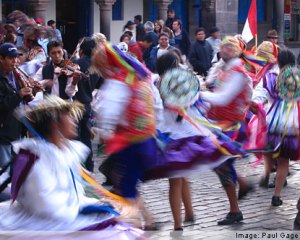
photo from destination360.com
Nothing demonstrates Peru’s cultural identinty more than the 3,000 or so festivals that take place annually that mix Spanish religious influences and native traditions. Certain towns are reputed as putting on the best, or most speculator, celebrations, so some research is required to determine the best locale. Here’s a sampling of these events.
In Cusco, is the second-largest South American festival, after Carnival in Rio de Janeiro, Inti Raymi reenacts an Inca ceremony that pays homage to the Inca gods. This YouTube video gives you an idea of what takes place.
Another festival is the celebration of Corpus Christi which takes place 60 days after Easter Sunday. Representatives from nearby churches take part in the main day procession, bearing their patron saints in a procession bound for the city’s main cathedral.
One raucous Peruvian festivals pays homage to the Virgen del Carmen in the town of Paucatambo. She is the patron saint of the mestizo peoples, and the scary costumes worn by the particpants represent the demons that the Virgin of Carmen drove away.
During the Peru Carnival, strangers soak each other with water balloons and water guns. The Andean towns are famous for the liveliest carnival celebrations, with the city of Cajamarca earning special recognition.
Christmas probably takes top billing in terms of importance. Christmas melds Spanish and Indian traditions as colorful processions give way to the solemn Christmas Eve mass. For residents of Lima, the country’s biggest bull fight might be how they choose to celebrate Christmas. In Cusco, people buy hot chocolates for needy children.
Agriculture

photo from daylife.com
The natural bounty that Peru has at its disposal is breath taking, and has many a chef salivating at the possibilities. Its biodiversity exceeds 21,000 plant and animal species as of 2003 (wiki is the source). Of these, over 5,800 of them are found only in Peru.
- 35 varieties of corn
- 15 species of tomatoes
- 2,000 of the 3,000 varieties of potatoes found in the world reside in Peru.
- over 2,000 varieties of sweet potatoes
- 2,000 species of fish -no other country comes close
- Over 650 native species of fruit
A sampling of food that Peru and South America introduced to the world
- Potatoes were brought to Europe by the returning Spaniards
- Corn is native to all of Central and South America
- Tomatoes were introduced to Europe from Latin America
- Peanuts were taken by Spanish and Portuguese merchants to Africa. Later these peanuts were introduced to America (South) by the African slaves.
From its interaction with Africa via Spain, Peru imported diverse foods such as bananas, and yams.
Peruvian cuisine is often made spicy by the addition of the ají pepper. Some Peruvian chili peppers are not spicy but serve to give taste and color to dishes. Rice often accompanies dishes in Peruvian cuisine, and the regional sources of foods and traditions give rise to countless varieties of preparation and dishes.
Food by Region
With the eclectic variety of traditional dishes, the Peruvian cuisine constantly evolves, and it is impossible to list; as along the Peruvian coast alone there are more than 2,000 types of soups, and over 250 traditional desserts. The following summary barely scratches the surface of regional Peruvian food, as the diversity is incredible! Not only is this the result of the outside influence of other cultures, but of the natural bounty that the country has. Consider the stunning climatic variety that Peru has 28 of a possible 32 world climates.

photo from destination360.com
Coastal cuisine
The cuisine of the coast can be said to have five strong influences: Japanese, the Moorish, the African, the Chinese and natives. Given that the Pacific Ocean is the principal source of fish, and Peru ranks as the world’s top two producers and exporters, with many oceanic plant and animal species found only in Peru – seafood is high on the list of ingredients.
Lima and Central Coast Cuisine
A center of immigration and of the Spanish Viceroyalty, Lima and Trujillo incorporated dishes brought by the Spanish Conquistadors and the immigrants from various continents. Since the second half of the 20th century, a strong shift from rural areas to cities (Lima being a prime example) has strongly influenced their cuisine.
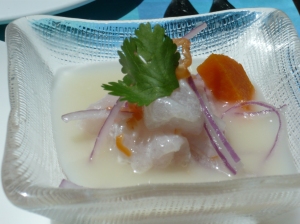
La Mar ceviche
Ceviche, often spelled “cebiche” in Peru, is the coastal dish, consisting of bite-size pieces of white fish, marinated raw in lime or lemon juice mixed with chillies. Ceviche is served with raw onions, boiled sweet potatoes (camote), toasted corn (cancha), and sometimes a local green seaweed yuyo. Leche de tigre (tiger’s milk), is the Peruvian colloquial name for the juice produced from these ingredients.
Tiradito, cervices’ younger sibling, shows the influence that Japanese cooks on Peru’s seafood cuisine (though some suggest it’s closer to Italian carpaccio). The fish is sliced in fine strips and marinated in lime juice, ginger and ají limo. The distinguishing feature is that they lack onions, translating into a subtler taste.
Lima bean (pallares) salad made with Peruvian Lima butter beans, boiled whole and mixed with a “salsa” of onions, slices of tomatoes, and green ají (chili), marinated in green Peruvian lime juice, oil, salt, and vinegar. Lima butter beans (pallares) have been part of the Peruvian cuisine for 6,000 years.
Carapulcra is a stew of pork and chicken, dried potatoes, red chilis, peanuts and cumin. The version from the Afro-Peruvian Inca region uses fresh potatoes.
In the 150 years since its arrival in Peru, the Chinese Peruvian culture has revolutionized Peruvian cuisine, gaining international recognition. Chifa reflects a fusion by Chinese Peruvians of the products that were brought from China to what they found in Peru. Some creole dishes such as tacu-tacu, lomo saltado, and arroz chaufa were influenced by the Chinese.
Cuisine of the Northern Coast
The cuisine of the northern coast differs from the central and southern varieties. This is not only due to the coastal native Indian, Spanish, African and Gypsy influence (Hindustani); but also the warmer coastal waters, hotter climate and immense geographical variety.
Shambar is a soup made with wheat, pork rinds, smoked ham, assorted beans, and green onions, and served with toasted corn (cancha).
Seco de Cabrito (goat stew, but often substituted with lamb, chicken, or beef) is made in a pot after marinating with beer and other spices including fresh cilantro and garlic.
Cebiche de Conchas Negras (ceviche with black shells) is a dish of Piura and Tumbes. In this version of ceviche, the seafood used in the dish should be black clams accompanied toasted corn.

photo from destination360.com
Andean cuisine
In the Andes, the locals’ diet is based on corn, potatoes, and assorted tubers as it has been for hundreds of years.
The pachamanca is a very special banquet, and cooked throughout the Andes. It is made from various meats (including pork and beef), herbs and vegetables that are slowly cooked underground on heated stones. Because of its tedious preparation it is saved for celebrations.
Olluquito con charqui is a typical Andean stew. Olluco is a tuber domesticated by pre-Inca populations, and is visually similar to colorful small Andean potatoes, but with a distinct crunchy texture when cooked. Charqui is the technique to cure meat by salting, then dehydration. The stew consists of finely diced ollucos with charqui pieces (traditionally alpaca, llama, or sheep) and served with rice.
Jungle cuisine
Paiche (one of the world’s largest freshwater fish) is the common protein here. Fruit include camu camu, mango and pineapple.
So back to what promted this post, that meal at La Mar.
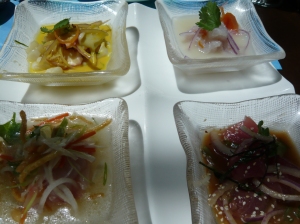
La Mar ceviche
Instead of a bread basket they brought strips of potato and plantains that were fried nice and crispy accompanied by a trio of dipping sauces. We started with the ceviche sampler, which contained the four cerviches the restaurant makes: mixto, chifa, nikei, and clasico. From the first bite we knew the food was prepared by someone who knew and loved good fish and seafood and had a deft hand at seasoning. I’ll leave the descriptions of mouth feel and waxing poetic to the restaurant critics, but I can tell you that DailySpud and I would have licked the dishes to secure every last drop of the leche de tigre if we were not in polite company. Alas, the sacrifices made for good behavior. The ceviche chifa was our favorite with its Asian overtones (mahi mahi, peanuts, scallions, ginger, pickled carrots, daikon, habaneros, wonton strips, and sesame oil).
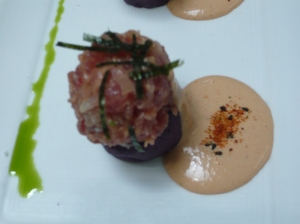
La Mar causas
Without question we had to have a causas. We chose the causa nikei (purple potato with the avocado puree, creamy aji amarillo and rocoto Huancaina sauce). Daily Spud might be more expansive, I’ll just say “yum”!
Did I mention were sipped Pisco Sours as we devoured this meal? They had to be the best I ever had, and the waiter assured us they were the perfect choice for our selections. Come to think of it, he said that about everything we ordered, a very congenial gentleman.
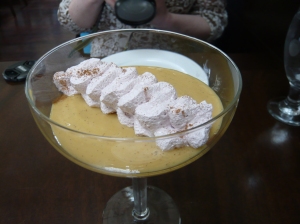
La Mar dessert
Amazingly, we topped off this extravaganza with a dessert. I do not usually have a sweet tooth, but the selection here was so different than what I am accustomed to that I could have tried them all, but thankfully I can go back. Unfortunately, the menu on their website does not list this dish, but it was a type of custard (the consistency like condensed milk) topped with Madeira flavored whipped cream. Over-the-top rich, and thank goodness we shared, so I did not have to waddle out of there.
Peruvian cooking has been given the same accolades as French and Italian because of the diversity of its ingredients and cooking techniques. If you do not believe me: The Economist stated that “Peru can lay claim to one of the world’s dozen or so great cuisines”, and at the Fourth International Summit of Gastronomy (regarded as the world’s most important gastronomic forum) Lima was declared the “Gastronomic Capital of the Americas” Do not take my word for it – find out for yourself.

